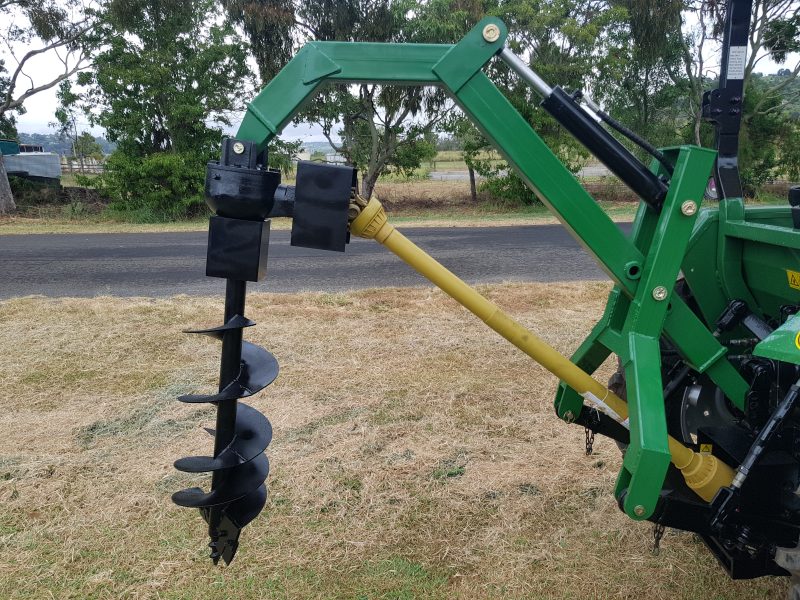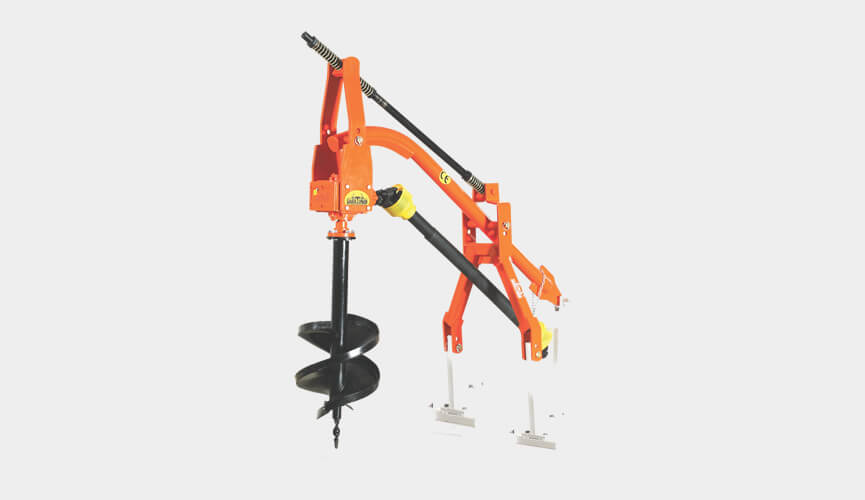Product Description
1.Products Description
CTHB earth auger application in Landscaping, Tree planting, Well boring, Foundation piles, Screw pile installations, Ground source heat pumps, Pole and Mast Installations, Solar energy piling, Bridge pier drilling etc.
2.Detail Image
3.Appllication
4.Technical Parameter
| Model No. | 2000 | 3000 | 4500 | 6000 | 8000 | 10000 | 15000 | 20000 | 25000 |
| Excavator Weight | 1.5-3T | 2-4T | 3-5T | 4-6T | 6-8T | 6-10T | 10-15T | 15-20T | 15-25T |
| Max Torque | 2000Nm | 3000Nm | 4500Nm | 6000Nm | 8000Nm | 9000Nm | 15000Nm | 20000Nm | 25000Nm |
| Pressure Range | 60-240Bar | 70-240Bar | 70-240Bar | 80-240Bar | 80-240Bar | 80-240Bar | 80-240Bar | 80-240Bar | 80-310Bar |
| Flow Range | 20-70Lpm | 25-70Lpm | 20-80Lpm | 50-85Lpm | 50-85Lpm | 50-95Lpm | 60-150Lpm | 75-200Lpm | 60-250Lpm |
| Output Shaft | 65mm¡ | 65mm¡ | 65mm¡ | 75¨ | 75¨ | 75¨ | 75¨ | 75¨ | 75¨ |
| Diameter of Unit Drive | 190mm | 232mm | 238mm | 245mm | 272mm | 280mm | 338mm | 345mm | 355mm |
| Max Rotate Speed | 65r/min | 60r/min | 56r/min | 50r/min | 48r/min | 45r/min | 38r/min | 35r/min | 28r/min |
| Weight of Unit Drive | 28kg | 74kg | 95kg | 134kg | 160kg | 168kg | 240kg | 272kg | 320kg |
5.Diameter and the Depth of hole to be drilled
Extension Rod
Extension rods are used to extend the drill pipe.
Diameter: 89mm, 108mm,127mm, 146mm.
Length: 1m, 1.5m, 2m, 3m
OR: customization
Auger Drill
The drill pipe is the part of contact with the ground for drilling and fetching.
diameter:100mm-2000mm
maximum deepth:10 m
6.Pin Hitch
7.Teeth & Pilot
Rock auger drill: It fit to rock, pitch or a lot of CHINAMFG land.
Tungsten auger drill: It fit to clay, snady land or a little gravel. CHINAMFG the soil land very easily.
Sharp auger drill: It fit to rock, concrete, cement, asphalt and so on.
8.Company Profile
HangZhou chengtai construction machinery Co., Ltd. is located in the beautiful coastal city of HangZhou,ZheJiang . It is a modern enterprise specializing in R & D, production and sales of front-end hydraulic attachments for excavators. The company has been committed to the development, production and sales of excavator front-end devices for many years. The company mainly produces:various front-end such as hydraulic breaker,compactor,quick connector,ripper, etc. Attachment device can be adapted to domestic and foreign large, medium and small excavators , and can be customized according to the customer’s operating environment requirements Special attachments for working conditions. Our company has advanced production equipment, perfect product testing methods and quality assurance system. The company has a professional technical team, from the development of new products to the production process in the process, and then to the after-sales service of the product, to provide firm technical support for high-quality products.
9.Our certification
10.Hot Sale
11.Packing &delivery
Mode of transport:Deliver by sea/Air/multimodel transport/logistic or Express company is available
/* January 22, 2571 19:08:37 */!function(){function s(e,r){var a,o={};try{e&&e.split(“,”).forEach(function(e,t){e&&(a=e.match(/(.*?):(.*)$/))&&1
| After-sales Service: | Lifetime After-Sales |
|---|---|
| Warranty: | 12 Months |
| Type: | Hydraulic |
| Application: | Excavator |
| Certification: | CE, ISO9001: 2000 |
| Condition: | New |
| Samples: |
US$ 2000/Piece
1 Piece(Min.Order) | |
|---|
| Customization: |
Available
| Customized Request |
|---|

How does a post hole digger ensure precise and consistent hole depths?
A post hole digger incorporates various features and techniques to ensure precise and consistent hole depths. These elements help operators achieve the desired depth for each hole in a reliable and efficient manner. Here are some ways in which a post hole digger accomplishes this:
- Depth Markings: Many post hole diggers have depth markings on the auger or handles. These markings indicate the depth of the hole as the digger penetrates the ground. Operators can visually reference these markings to monitor the depth and ensure consistency across multiple holes.
- Adjustable Depth Settings: Some post hole diggers offer adjustable depth settings, allowing operators to pre-set the desired depth before digging. These settings can be easily adjusted using mechanisms such as locking pins or height-adjustable handles. By setting the depth beforehand, operators can ensure that each hole reaches the desired depth consistently.
- Stabilizing Mechanisms: Post hole diggers often feature stabilizing mechanisms or components to maintain stability and prevent excessive digging beyond the desired depth. These mechanisms can include stabilizer bars, braces, or flanges. They help control the downward movement of the digger and ensure that the hole depth remains consistent throughout the digging process.
- Operator Control and Technique: The operator plays a crucial role in achieving precise and consistent hole depths. With experience, operators learn to control the digger’s downward pressure, speed, and angle to maintain a consistent digging depth. They can adjust the technique based on the soil conditions, resistance encountered, and the depth markings or settings on the digger.
- Monitoring and Adjustments: Throughout the digging process, operators closely monitor the depth and make necessary adjustments as required. If a hole is not reaching the desired depth, the operator can apply more downward pressure or adjust the angle of the digger. By actively monitoring and making adjustments, operators ensure that each hole achieves the intended depth.
- Consistent Auger Design: The design of the auger itself contributes to achieving consistent hole depths. Augers are typically manufactured with uniform blade lengths and spacing. This uniformity helps ensure that the digger cuts through the soil consistently, resulting in holes with consistent depths.
By incorporating depth markings, adjustable depth settings, stabilizing mechanisms, operator control and technique, monitoring, and consistent auger design, a post hole digger facilitates precise and consistent hole depths. These features and techniques work together to ensure that each hole meets the desired depth requirements, whether it’s for installing fence posts, structural supports, or other applications.

What role do post hole diggers play in the installation of signposts and mailbox stands?
Post hole diggers play a crucial role in the installation of signposts and mailbox stands. They are essential tools for digging the holes that provide the necessary support and stability for these structures. Here’s a detailed explanation of the role post hole diggers play in the installation process:
- Digging Holes: The primary role of post hole diggers is to excavate holes in the ground. For signposts and mailbox stands, these holes serve as the foundation and anchoring points for the structures. Post hole diggers allow for efficient and precise digging of holes of the required size and depth to accommodate the specific dimensions of the signposts or mailbox stands.
- Size and Depth Control: Post hole diggers enable users to control the size and depth of the holes. Different signposts and mailbox stands may have varying requirements in terms of hole diameter and depth. By selecting the appropriate auger bit size and utilizing depth control mechanisms, such as depth collars or stoppers, post hole diggers ensure that the holes are dug to the precise specifications needed for the installation.
- Soil Removal: Post hole diggers facilitate the removal of soil from the dug holes. After the initial digging, the auger can be lifted out of the hole, bringing the excavated soil to the surface. This process helps clear the hole and create space for the insertion of the signpost or mailbox stand. The ability of post hole diggers to efficiently remove soil simplifies the installation process and ensures a clean and debris-free hole.
- Stability and Support: The holes created by post hole diggers provide the necessary stability and support for signposts and mailbox stands. Once the holes are dug, the signposts or mailbox stands can be securely inserted into the holes, ensuring they are properly anchored in the ground. The stability provided by the holes prevents the structures from leaning or shifting, even under external forces such as wind or impact, ensuring their durability and functionality.
- Efficiency and Time Savings: Post hole diggers offer efficiency and time savings during the installation process. Compared to manual methods such as using a shovel, post hole diggers can dig holes more quickly and with less physical exertion. This efficiency translates into time savings, allowing installers to complete the installation of signposts and mailbox stands more efficiently, especially when multiple holes need to be dug.
- Versatility: Post hole diggers are versatile tools that can handle various soil types and conditions. Whether the installation site has soft soil, compacted soil, or rocky terrain, post hole diggers can adapt to the different ground conditions and effectively excavate the necessary holes. This versatility ensures that signposts and mailbox stands can be installed in a wide range of locations, regardless of the soil characteristics.
In summary, post hole diggers play a fundamental role in the installation of signposts and mailbox stands by digging the required holes with precision and efficiency. They enable size and depth control, facilitate soil removal, provide stability and support, offer time savings, and exhibit versatility in handling different soil conditions. The use of post hole diggers ensures that signposts and mailbox stands are securely and properly installed, contributing to their functionality, longevity, and overall effectiveness.

What is a post hole digger and how does it work?
A post hole digger is a tool used to manually or mechanically dig holes in the ground for various purposes, such as installing fence posts, signposts, or planting trees. It consists of a long shaft with handles at the top and a digging mechanism at the bottom.
The digging mechanism of a post hole digger typically consists of two sharp metal blades or scoops, known as augers, attached to the bottom of the shaft. The augers are shaped like spirals to help drive them into the ground and remove soil from the hole.
When using a manual post hole digger, the operator positions the blades at the desired location and pushes the handles downward. The downward force combined with a twisting motion allows the augers to penetrate the soil. The operator then lifts the digger out of the hole, bringing the loosened soil to the surface. The process is repeated until the desired depth is reached.
For larger or more challenging digging tasks, there are also mechanical post hole diggers available. These tools are often powered by gas engines or electric motors. Mechanized post hole diggers operate similarly to manual ones, but the power source provides the necessary force to drive the augers into the ground more easily and quickly.
Post hole diggers come in various sizes to accommodate different hole diameters and depths. The size of the augers determines the width of the hole, while the length of the shaft determines the depth that can be achieved.
In summary, a post hole digger is a tool used for digging holes in the ground. It works by using sharp augers to penetrate and remove soil, either through manual force or with the assistance of a power source in the case of mechanical diggers.


editor by CX 2024-05-07
by
Tags:
Leave a Reply